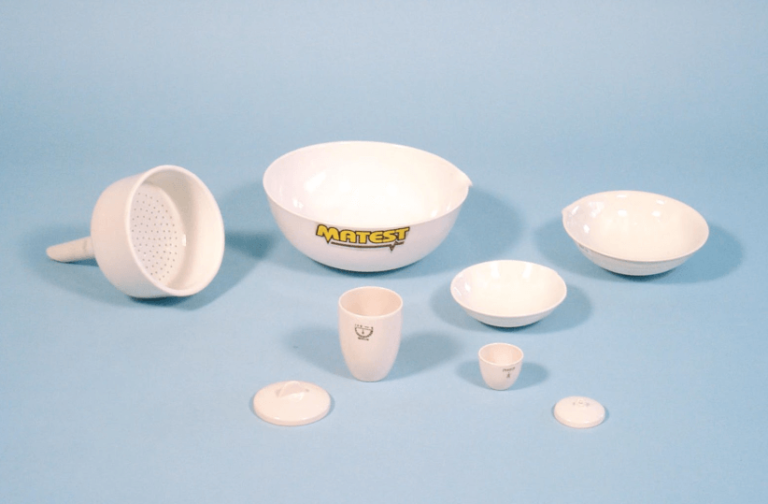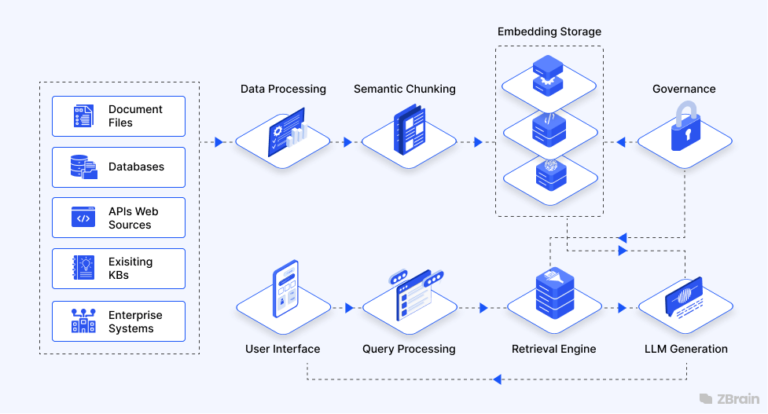Installing and Using Safari Browser on Windows OS
Apple Inc.’s Safari is a popular web browser that is quick, efficient, and integrates seamlessly with the Apple environment. While Safari is primarily designed for macOS and iOS, Apple previously published a version for Windows users. The version, known as Safari for Windows, gave Windows users a preview of the browser’s capabilities, including a clean design, quick web browsing, and strong privacy measures.
While Apple discontinued support for Safari on Windows with version 5.1.7, many people continue to download and install the browser on their Windows platforms to test website compatibility or simply enjoy the unique surfing experience.
In this article, we will understand how to install and use Safari on Windows OS. We will first learn about Safari for Windows, and its key features, along with some limitations and best practices, before we move further.
Overview of Safari for Windows
Safari for Windows was released in June 2007 as a part of Apple’s initiative. It was intended to increase the scope of its WebKit engine, upon which the Safari browser for macOS and iOS is based. WebKit was then much praised for its speed and efficiency, and Safari on Windows was viewed as a second best to Internet Explorer, which held dominance over the market for Windows browsers at that moment.
Following a few years, Apple released a number of iterations of Safari for Windows. The browser was popular because it allowed fast browsing, was easy to use, and integrated with features from macOS and iOS like Apple’s online world and iCloud.
Safari for Windows, in spite of having many technical advantages and being an effort by Apple to expand its software ecosystem, never achieved mass popularity in Windows users as the majority of them used other browsers. Apple officially ceased support for Safari on Windows in 2012 by no longer developing or updating the software after the final version, 5.1.7, was released. But for those users who still wish to use Safari on their Windows OS, be it for testing or personal use, the final available version can still be downloaded and installed so they can look at the browser’s distinct features even with no recent updates.
See also: How Tech Is Powering Remote Work
Key Features of Safari for Windows
Nowadays, Safari Windows is outdated, but previously it had a number of features that were way ahead of their time. Some of them include:
- WebKit Rendering Engine– Safari for Windows used the WebKit engine. This was later adopted by many mobile browsers and Chrome. WebKit is known for its speed and methodical memory usage, which bestowed Safari’s speed as well.
- Smooth Font Rendering – Safari for Windows was popular for its potential to provide smooth fonts. This made the text appear clearer to other browsers at the same time.
- Visual Bookmarks (Cover Flow)- The Cover-Flow style visual bookmarking system of Safari for Windows allowed its users to preview their saved websites in a visually appealing format. These features of Safari for Windows were a chunk of Apple’s emphasis on producing an elegant and user-friendly experience.
- Built-in Developer Tools– Safari included developer tools that permitted web developers to inspect elements, debug JavaScript, and optimize websites. Although it was not as well-equipped as modern tools like Chrome DevTools, these tools were effective for fundamental troubleshooting.
- Tabbed Browsing– Safari on Windows offered tabbed browsing. It is a feature that quickly became standard across browsers and permitted its users to open and manage multiple web pages within a single window.
- Private Browsing– The Private Browsing mode in Safari for Windows is just like its macOS counterpart. By this, it enabled its users to browse without storing history, cookies, or cache.
- Fast Performance and Optimized Memory Usage- Safari for Windows was known for its optimized memory usage and fast-paced rendition. The WebKit engine, along with Apple’s consciousness of regulation, permitted Safari to render pages in less time and with minimum memory consumption. In its time, Safari was one of the fastest browsers available on Windows.
Installing and using Safari Browser on Windows OS
While Apple discontinued Safari for Windows in 2012, there are still ways to experience or test Safari-like functionality on a Windows machine using tools and workarounds. Here’s how:
Using Cross-Browser Testing Platforms- Web-based services like LambdaTest allow users to remotely access Safari browsers running on real macOS machines. These platforms are perfect for developers and designers who want to test their websites in Safari without needing Apple hardware.
Lambdatest is an AI-native test orchestration and execution platform. It is used to test web and mobile applications manually and automatically at scale. This platform also allows testers to perform mobile and website testing in real-time by providing access to more than 5000 environments, real mobile devices, and browsers online.
By providing users with remote access to actual Safari browsers on real macOS infrastructure, LambdaTest eliminates the requirement for Apple hardware or ancient Safari installers. It is particularly beneficial for developers who must test website functionality, design, and performance in Safari.
This cloud platform also offers support for debugging tools, network throttling, and geolocation testing to mimic real user scenarios. Along with Safari, the platform also features an integrated Windows emulator so one can test on several versions of Windows and browsers such as Edge and Internet Explorer. These features make LambdaTest a robust cross-platform solution to provide consistent web experiences when native installation of Safari on Windows is not optimal or secure.
Installing the Last Official Version of Safari for Windows- Though outdated, the last version to be released for Windows was Safari 5.1.7 and can still be found on some third-party sites. Installing it will bring a basic Safari experience, but it is missing modern web standards, security updates, and compatibility, and is therefore not recommended for anything more than light browsing or testing.
Using Online macOS Emulators- Some websites offer online macOS simulators or emulators that run in the browser. These platforms simulate macOS, allowing limited interaction with Safari without installing anything. While not full-featured, they can be useful for quick previews or UI checks.
Accessing Safari via Remote Mac Services- Remote Mac services like MacStadium or AWS EC2 Mac instances provide access to macOS environments over the internet. With these, users can open a Safari browser session from their Windows PC, ideal for advanced development or enterprise testing needs.
Using Cross-Platform Automation Tools- Tools like Selenium can be configured with WebKit drivers to simulate Safari behaviour during automated browser tests. While not offering a GUI browser experience, it’s a powerful option for developers focused on backend compatibility and rendering logic.
Playwright, a browser automation tool by Microsoft, also allows developers to run WebKit, the engine behind Safari, on Windows. While not a full version of Safari, it replicates browser behavior accurately enough for testing websites in a Safari-like environment.
Alternatives to Safari that Use WebKit- If users want a browser that behaves similarly to Safari, consider WebKit-based browsers like GNOME Web (Epiphany). Though primarily for Linux, some builds can be run on Windows. They provide a Safari-like rendering engine experience.
Limitations of using Safari browsers on Windows OS
Mentioned below are some limitations to be considered before using Safari browsers on Windows OS:
- No Longer Supported by Apple- Apple no longer supports Safari for Windows after version 5.1.7, so no updates, fixes, or official support are available anymore. This renders the browser old and exposed.
- Potential Security Risks- With an old browser, users are vulnerable to severe security issues, ranging from susceptibility to malware to phishing and old encryption methods.
- No Sync with Apple Ecosystem- Unlike Safari on macOS, the Windows variant fails to sync bookmarks, tabs, or passwords with iCloud, which will be less beneficial to users in the Apple ecosystem.
- No Support or Troubleshooting Help- As Apple does not support the Windows version anymore, users will not receive official assistance or good community support for any problems that they encounter.
Best use cases for Safari on Windows
Mentioned below are some use cases for Safari on Windows:
Web Development and Testing- Developers wanting to verify that their sites are well supported in all the big browsers can use Safari on Windows to test Safari-specific rendering engine issues. Although the Windows version is not up to date, it does give a good idea of how Safari shows web pages and can help developers spot layout or functionality issues that might happen for Safari users on Macs or iPhones.
Legacy Software Compatibility- Some legacy applications or company internal systems may even need Safari in particular, particularly if they were written many years ago when Safari on Windows was still supported. In those situations, Safari installed on a Windows machine may be required for accessing or testing those legacy platforms without having to obtain a Mac.
Familiarity with Apple Users on Windows- People who spend most of their time working on Apple systems but make some intermittent entries into Windows would find it more familiar surfing the web using Safari on their Windows machine. This continuity can lower the learning curve and enhance workflow by providing the same interface, keyboard shortcuts, and user experience on other operating systems.
Educational or Experimental Use- Tech-savvy students, students of computer history, or simply students of web browser history might have use for Safari on Windows as an educational tool. Delving into its interface, features, and limitations can shed some light on browser development history and the difficulties of cross-platform browser support.
Cross-Browser Compatibility Checks- While Safari for Windows is no longer updated, it still helps designers quickly identify fundamental rendering or style issues that could affect Safari users. Testing on Windows Safari can serve as an initial step before deeper testing on actual macOS or iOS devices.
Accessing Apple-Specific Web Services- Some Apple web services, such as iCloud web apps, may provide more optimized or consistent functionality if accessed via Safari. Even though the Windows version is outdated, it could, at times, be superior to other Windows browsers in terms of accessing Apple’s online world.
Lightweight Browsing for Older PCs- Safari’s simple, streamlined design means it generally uses fewer system resources compared to more modern, feature-heavy browsers. This makes it a practical choice for browsing on older or less powerful Windows computers, where speed and low memory consumption are important.
Conclusion
In conclusion, running Safari on Windows is still a feasible option for those interested in trying out Apple’s previous cross-platform browser, particularly for testing or feeling out its user interface. Even though Apple dropped support back in 2012 and the final build (5.1.7) is outdated by the standards of today’s web, it can still be downloaded from third-party websites.
Users need to be aware of security restrictions and compatibility with contemporary websites. For general web surfing, modern browsers such as Chrome, Firefox, or Edge provide improved performance and current security. However, Safari on Windows is an interesting utility for users with particular requirements or an interest in Apple’s software heritage on the Windows platform.






